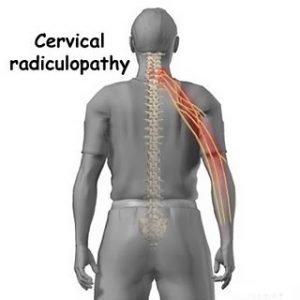Radiculopathy can be defined as a medical condition which a body suffers from when a nerve exiting the spinal column is under compression or feels irritated. Due to this compressed nerve in the spine a person suffers from pain usually neck pain as well as spinal pain. The person suffering from radiculopathy also feels weakness, tingling as well as numbness in the course if the nerve. Radiculopathy can attack any part of the spine however in majority of cases , this condition occurs usually in the lower back (known as lumbar radiculopathy) as well as the neck which is also known as cervical radiculopathy. This is why it is advices that a person suffering from neck and back pain get a proper neck pain diagnosis so that a proper treatment course can be decided upon.
Radiculopathy Causes
The main reason of course remains compressed nerves, however other causes of radiculopathy includes osteophytes or bone spur which is usually caused by osteoarthritis, herniated disc, as well thickening of the ligaments surrounding the spinal cord. Other no so common causes of radiculopathy are from tumr or infections in the spine and scoliosis. Doctors have also termed diabetes as a possible cause of this disorder as it can decrease the usual blood flow to the spinal nerve.
 Radiculopathy Symptoms
Radiculopathy Symptoms
As this problem are due to compressed nerve the main symptoms of radiculopathy includes neck pain, back pain, numbness in shoulders and arms, tingling sensation in the legs and arms and weakness and stiffness in legs, arms and neck.
Radiculopathy Diagnosis and treatment
A specialist of spinal injuries and disorder usually start the whole procedure of diagnosis with a physical examination and a complete study of the medical history of the patient. Imaging tests like X-ray, CT –scan as well as MRI are also used for the diagnosis of this problem.
Patients suffering from radiculopathy are usually advised by the doctor to go for physical therapy, chiropractic as well as medication as a viable treatment option.



